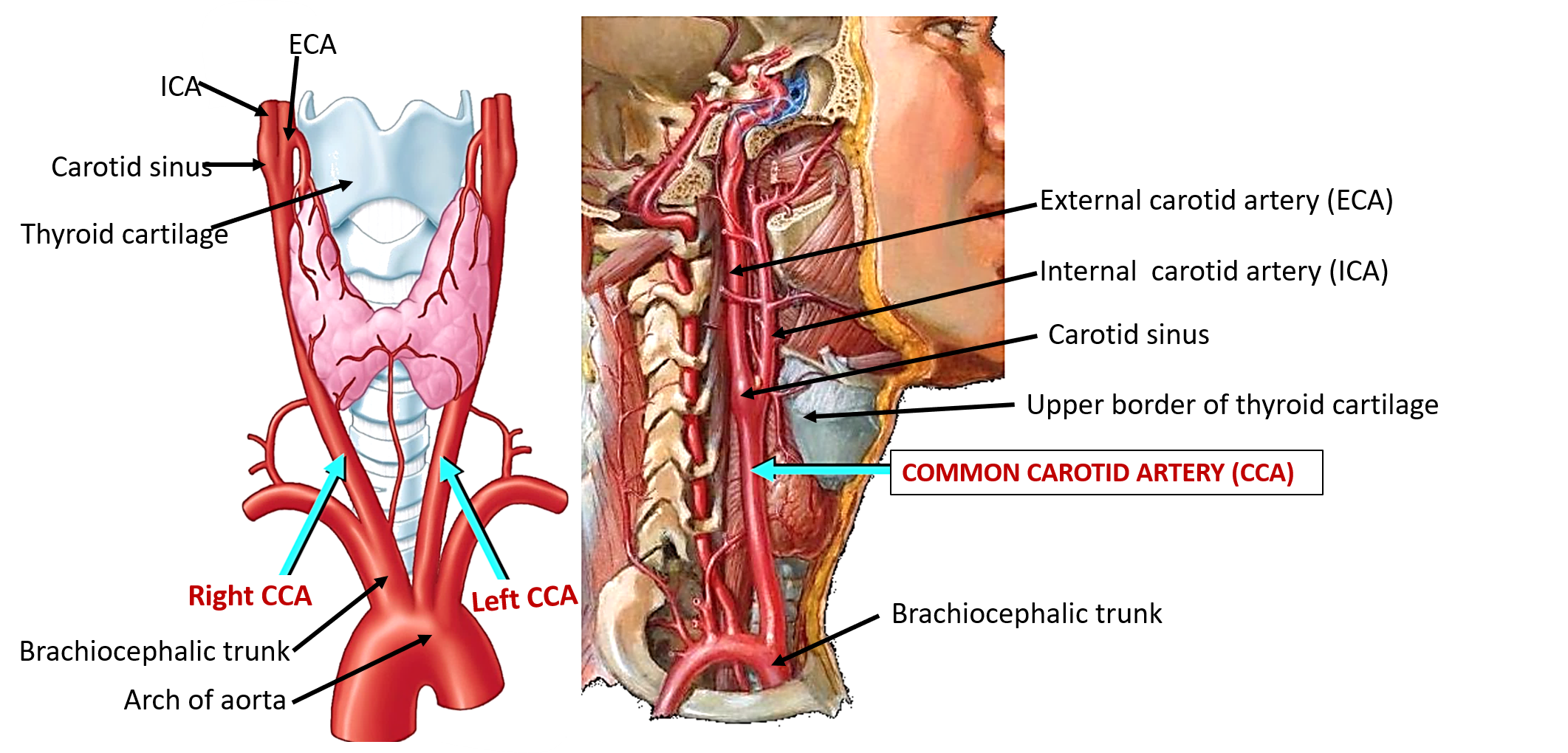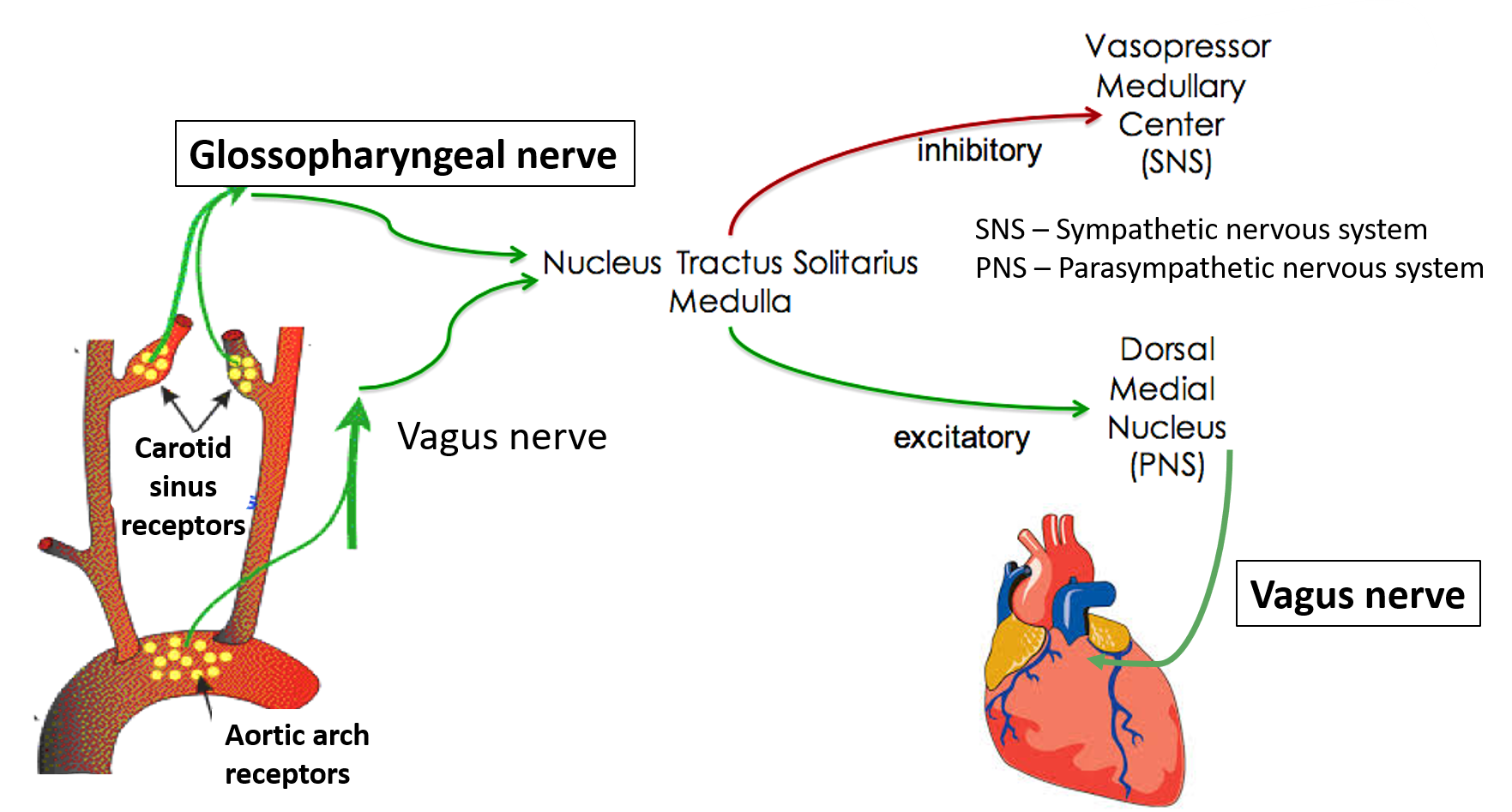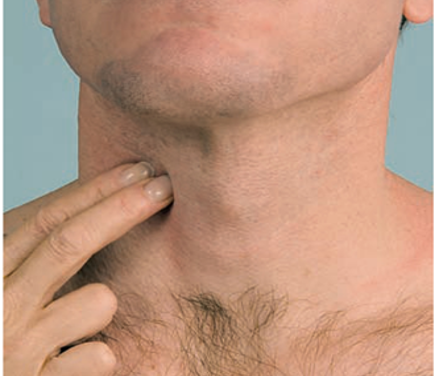Origin and Termination of Common Carotid Artery
Common carotid arteries (2- right and left) are the main arteries that supplies head and neck region.
Origin:
- Right common carotid artery arises from the brachiocephalic trunk (innominate artery), behind the sternoclavicular joint in the neck.
- Left common carotid artery originates from the arch of aorta in the thorax.
Termination: Each common artery terminates at the level of upper border of the lamina of thyroid cartilage (opposite the disk between the 3rd & 4th cervical vertebrae), where it ends by dividing into internal and external carotid arteries.

Course and Branches of Common Carotid Artery
Course
- As the left common carotid artery arises directly from the arch of aorta arch, its course can be divided into two parts: thoracic and cervical. However, the right common carotid artery arises cranially from bachiocephalic trunk, it has only a cervical part.
- The thoracic part of the left common carotid travels upwards through the superior mediastinum to the level of the left sternoclavicular joint where it is continues as the cervical part.
- The cervical part of both common carotid arteries follows a similar course. Each artery passes obliquely upwards from behind the sternoclavicular joint to the level of the upper border of the thyroid cartilage.
Branches of Common Carotid Artery
It has only two terminal branches viz.
- Internal carotid artery
- External carotid artery
It does not give any direct branches to supply any structure .
For Internal carotid artery [Click here]
For External carotid artery [Click here]
Carotid Sinus
- It is a fusiform dilatation at the termination of common carotid artery and beginning of internal carotid artery.
- The wall of the carotid sinus is thinner and more elastic than the other parts of the artery.
- It is sensitive to pressure changes in the arterial blood at this level and acts as a baroreceptor (pressure receptor) and regulates the blood pressure.
- It is supplied by the sinus branch of glossopharyngeal nerve.
- Reflex arc to control the blood pressure: Stimulation of the sinus produces a reflex fall in the blood pressure and slowing of heart.
- Baroreceptors (stretch receptors that respond to the pressure induced by stretching of the blood vessel) in the carotid sinus are stimulated due to increase in the arterial blood pressure.
- Afferent limb of the arc: The baroreceptors of the sinus are innervated by a branch of glossopharyngeal nerve (sinus nerve of Hering) which carry the information to the nucleus tractus solitarius located in the medulla oblongata. The nucleus tractus solitarius sends fibers to the nucleus ambiguus and dorsal motor nucleus of vagus to regulate the parasympathetic activity.
- Efferent limb of the arc: Is formed by the parasympathetic fibers in the vagus nerve which slow the heart rate.

Carotid Body
- It is a small, oval-shaped neurovasular structure located just behind the bifurcation of common carotid artery close to the posterior wall of carotid sinus.
- It acts as a chemoreceptor and responds to the changes in the oxygen and carbon dioxide content in the blood.
- It receives nerve supply from the glossopharyngeal, vagus and sympathetic nerves.
- Stimulation of the carotid body due to decreased content of oxygen produces reflex rise in blood pressure and heart rate and changes in the depth and rate of respiration.
Applied Aspects
Carotid sinus syndrome
- Loss of consciousness due to simple head movements because of hypersensitivity of the carotid sinus due to an unknown etiology.
- Sudden slight pressure changes, such as movement of the head, may result in stimulation of the carotid sinus.
- Impulses transmitted from the sinus decrease blood pressure and slow the heart rate.
- This decreases the blood supply to the brain and results in sudden loss of consciousness.
Potato tumor
Potato tumor of the neck is a rare condition and is produced by the enlargement of carotid body. It is often associated with slow pulse and attacks of fainting due to pressure on the carotid sinus.
Site where carotid artery pulsation can be felt
It can be felt just beneath anterior border of sternocleidomastoid muscle, lateral to the superior border of thyroid cartilage.


The way of explanation is excellent, thank you